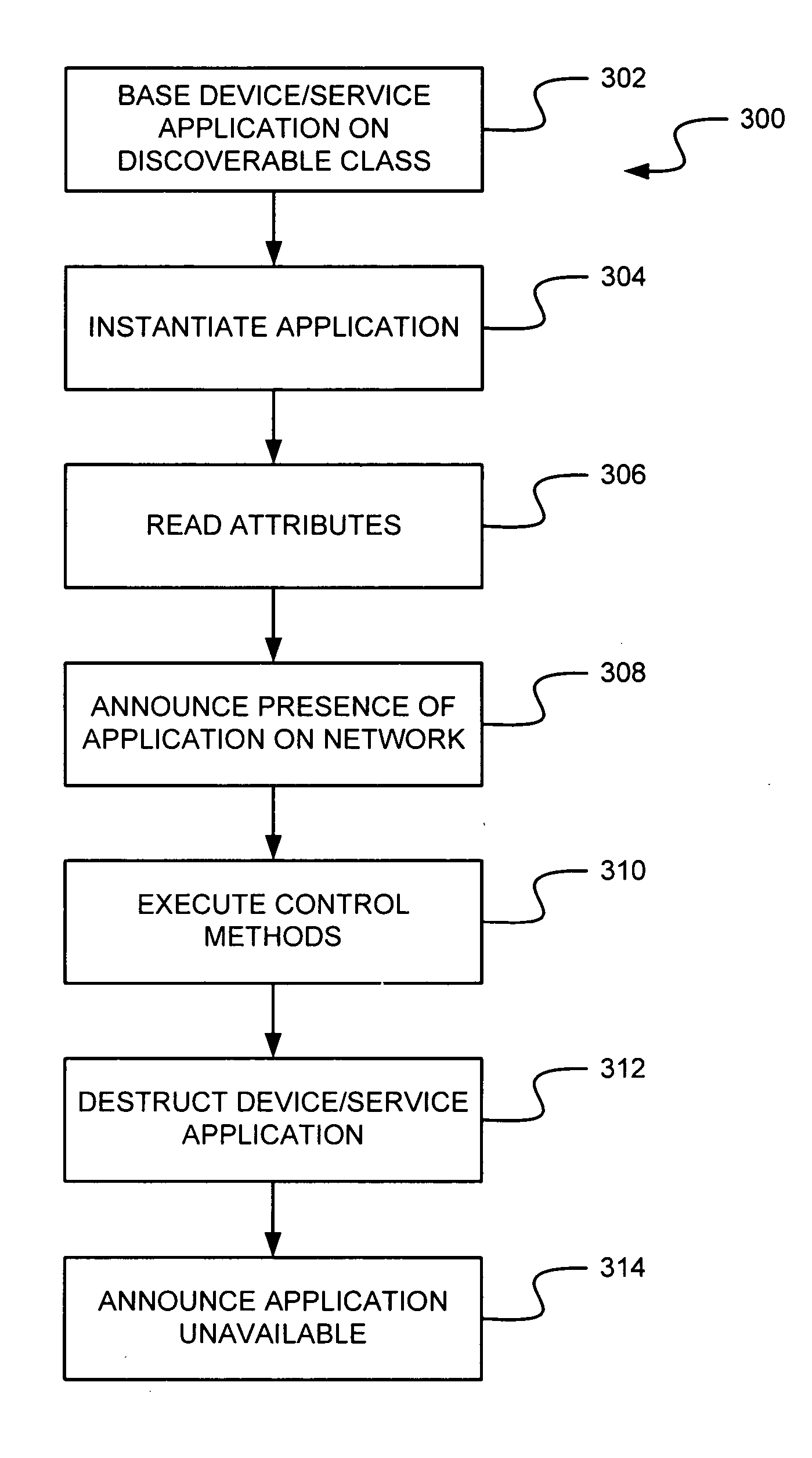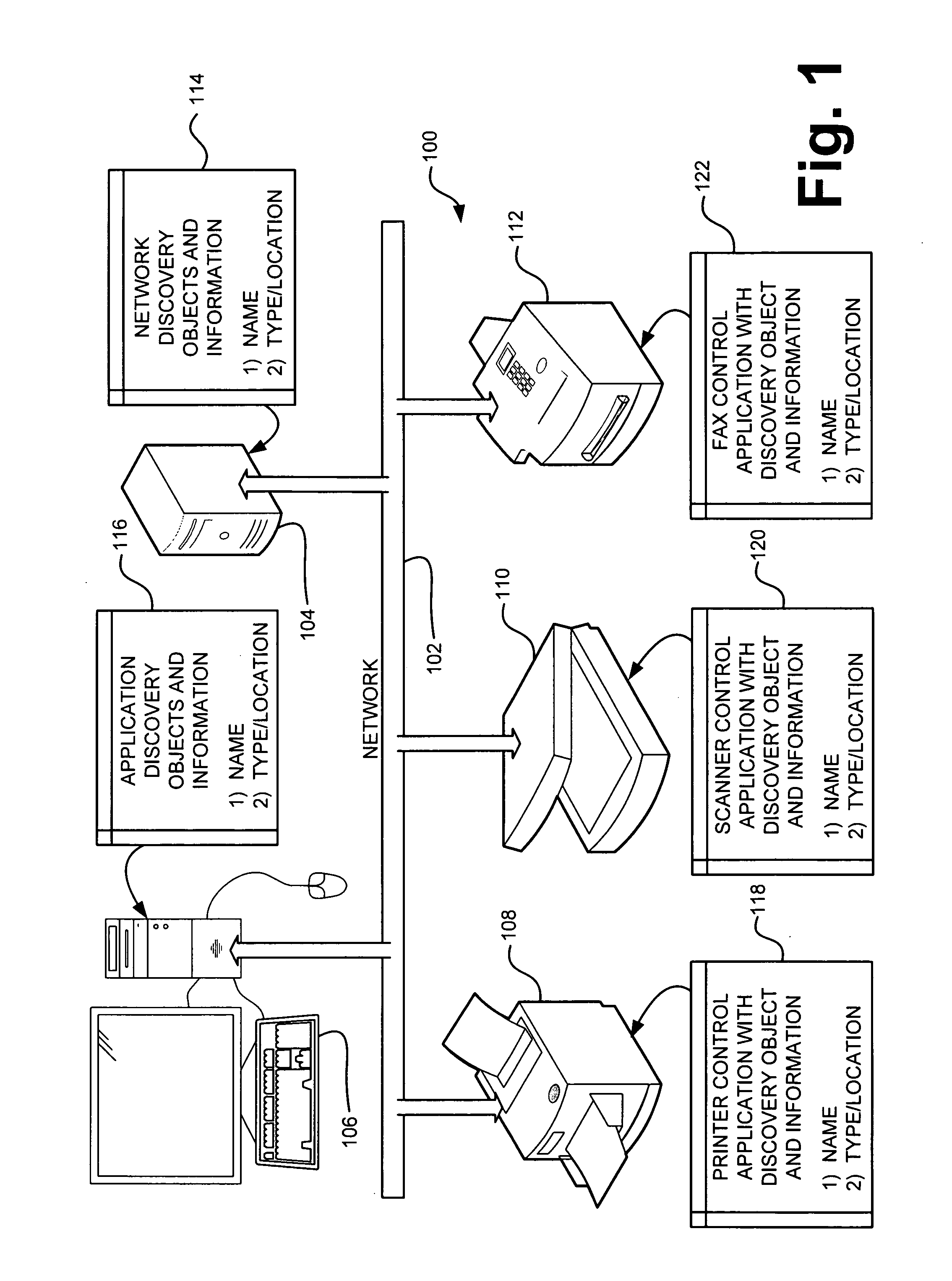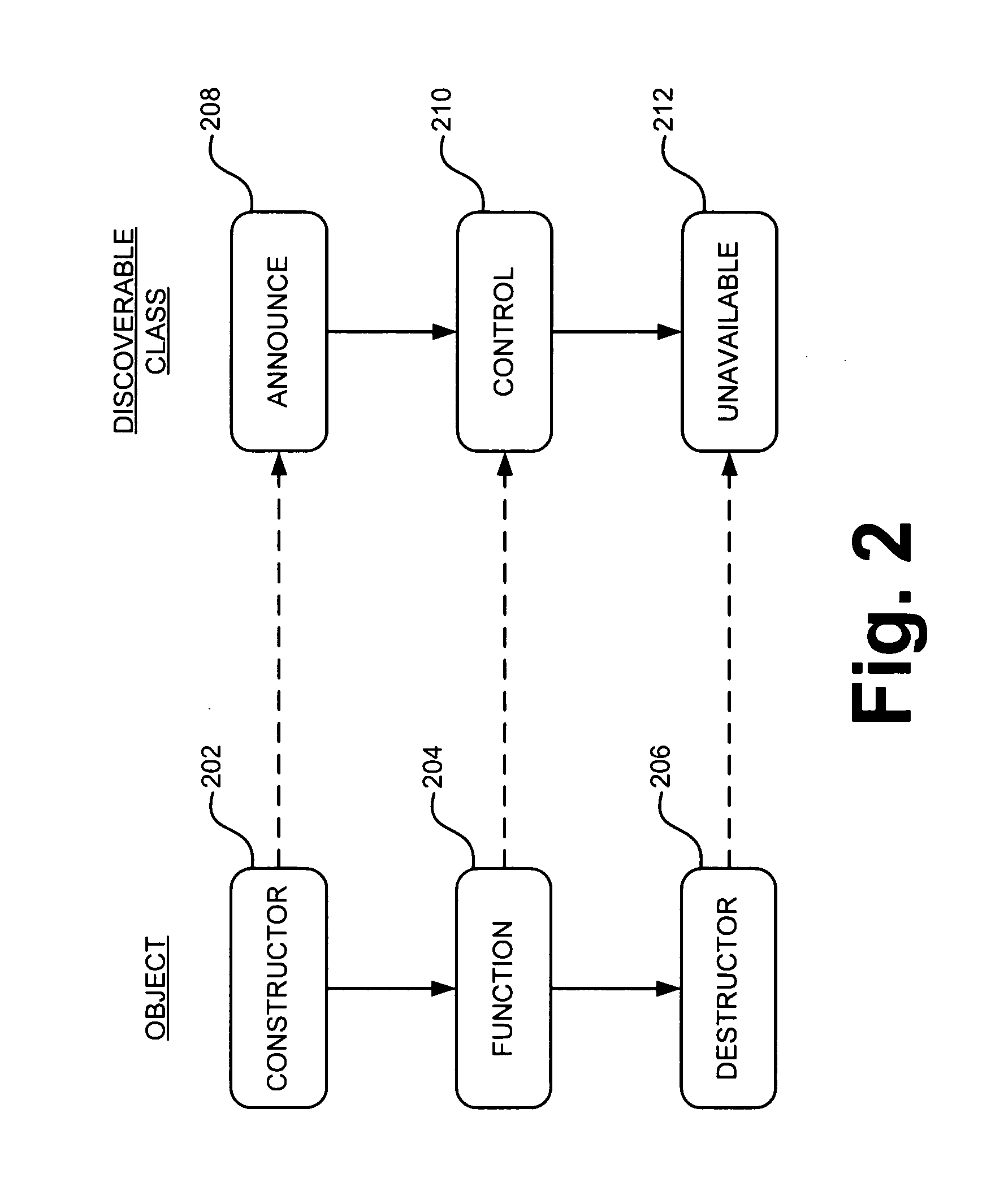Object-oriented discovery framework
a discovery framework and object-oriented technology, applied in multi-programming arrangements, instruments, data switching networks, etc., can solve problems such as complex problems, methods are often error-prone and quite difficult for developers to implement properly, and none defines a programming interface, so as to minimize the implications of process flow and programming logic, simple notation or attribute, and simple problem solving
- Summary
- Abstract
- Description
- Claims
- Application Information
AI Technical Summary
Benefits of technology
Problems solved by technology
Method used
Image
Examples
Embodiment Construction
[0012]“Discovery” is a general term for one of many protocols for identification and interface with devices, applications, and services on a computer network. The concept of discovery in a networked computer system 100 is illustrated in FIG. 1. The computer system 100 is typical of local area network (LAN) in an office or business environment. However, discovery is not limited to a business LAN and is a protocol implemented on any network, local or wide or virtual, wired or wireless.
[0013] In FIG. 1 a network 102, for example, an Ethernet network, connects a central server computer 104, for example, a file server, to one or more client computers 106. The network allows the client computers 106 to interact with the server computer 104, for example, to retrieve files or applications accessible by multiple users or to connect with an external network, for example, the Internet, in the common instance that the central server computer 104 acts as a gateway to other networks.
[0014] Othe...
PUM
 Login to View More
Login to View More Abstract
Description
Claims
Application Information
 Login to View More
Login to View More - R&D
- Intellectual Property
- Life Sciences
- Materials
- Tech Scout
- Unparalleled Data Quality
- Higher Quality Content
- 60% Fewer Hallucinations
Browse by: Latest US Patents, China's latest patents, Technical Efficacy Thesaurus, Application Domain, Technology Topic, Popular Technical Reports.
© 2025 PatSnap. All rights reserved.Legal|Privacy policy|Modern Slavery Act Transparency Statement|Sitemap|About US| Contact US: help@patsnap.com



